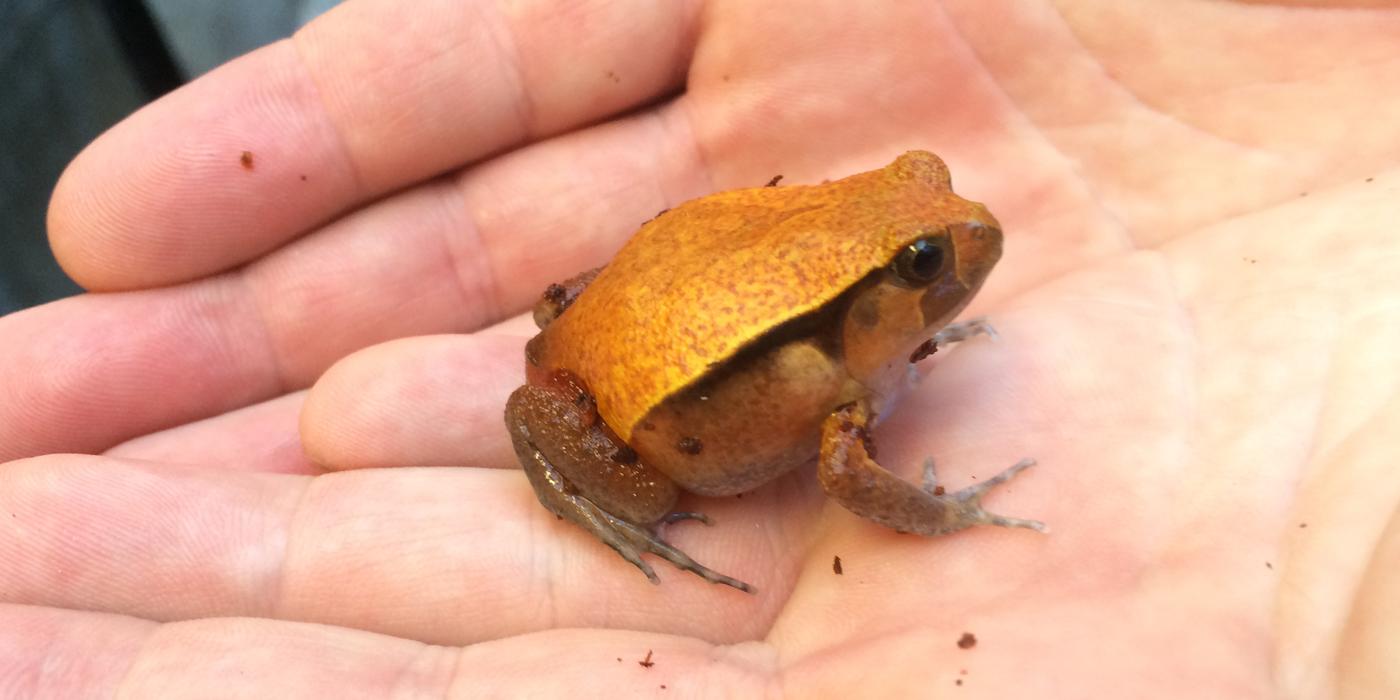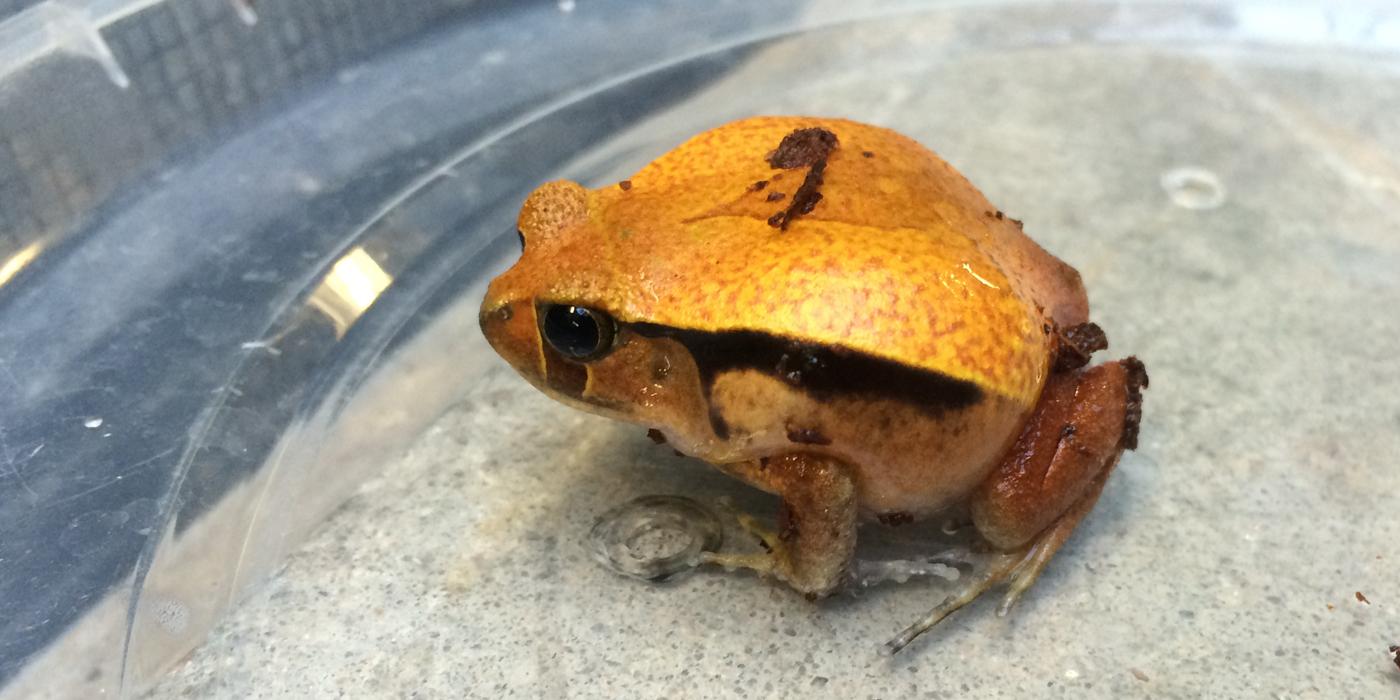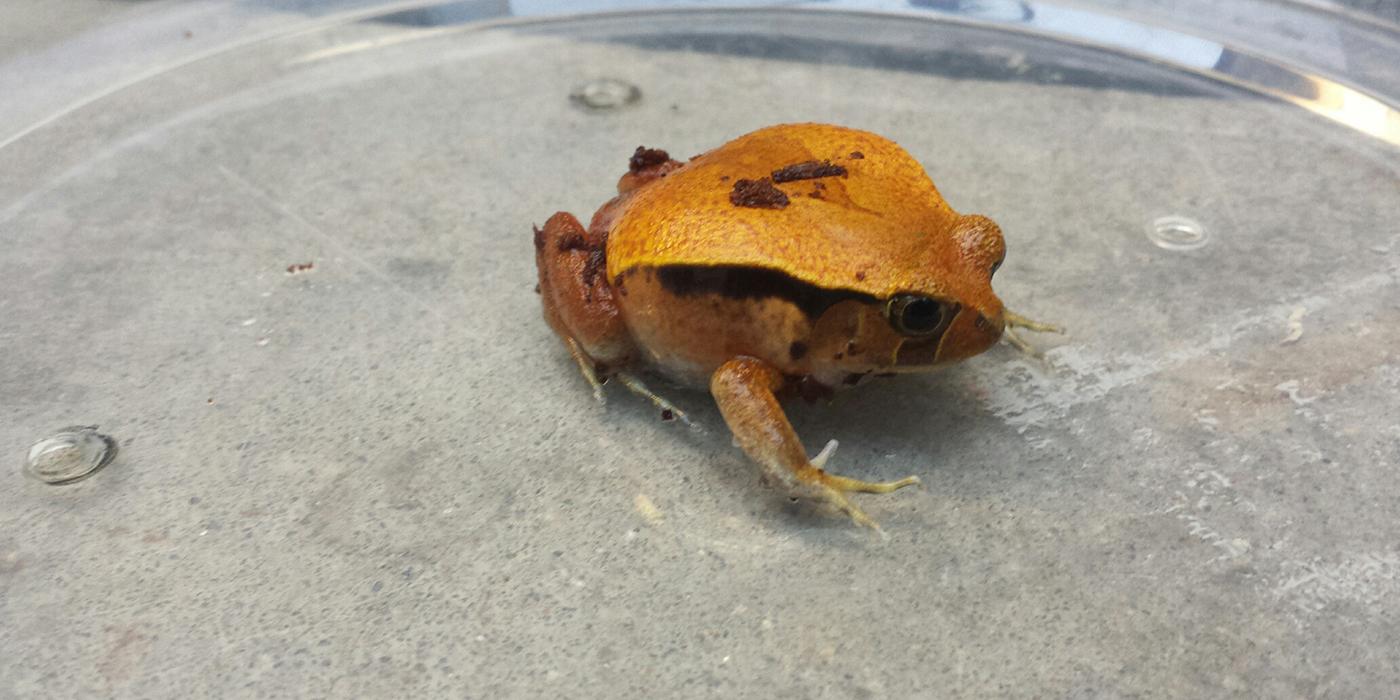Physical Description
Tomato frogs are best identified by their striking colors. Males are a yellow-orange and females a brighter, red-orange. The frogs' undersides are an off-white color, and in some instances these frogs may have black spots on their backs. Two dorsolateral folds run down their backs, and a dark brown stripe extends from behind the eyes to each rear leg. The tomato frogs' forefeet are not webbed, and the webbing in their hind limbs is not pronounced.
Tomato frogs can release a toxic secretion through their skin. These frogs spend much of their time burrowed under leaves and mud. In addition to their toxicity, they can inflate themselves to deter predators.
Size
Tomato frogs grow between 2.5 and 3.5 inches (60 to 90 millimeters), and females tend to be slightly larger than males.
Native Habitat
This species is found exclusively in Madagascar, along the eastern rainforest belt of the island. Tomato frogs primarily inhabit rainforests and swamp forests, where they prefer slow moving, almost stagnant waterways and ponds. At night, they move around the forest floor.
Communication
Tomato frogs have unique vocalizations that can be heard in the evening and throughout the night when these frogs are most active.
Food/Eating Habits
Tomato frogs feed on insects, insect larvae and worms.
Reproduction and Development
Tomato frogs breed in freshwater pools. Females lay hundreds of black-and-white, sticky eggs on the surface of the water. About 36 hours later, transparent, filter-feeding tadpoles emerge. Tadpole development lasts approximately two months, and sexual maturity is reached between 2 and 4 years of age.
Conservation Efforts
Tomato frogs are listed as a species of least concern by the International Union for Conservation of Nature's Red List.
Habitat destruction, in addition to introduced disease and collection for the pet trade, threaten tomato frogs and many other species native to Madagascar. Their forest habitat is threatened primarily by human interference in the form of subsistence agriculture, timber extraction and livestock grazing.
The most notable disease affecting frog populations in Madagascar is chytridiomycosis, caused by the fungal pathogen Batrachochytrium dendrobatidis.
Commonly known as chytrid fungus, this disease presents a dire threat. Collection from the pet trade is driven primarily by herpetological hobbyists, who covet these frogs due to their remarkable coloration. A sister species of Dyscophus guineti, D. antogili, has been placed on Appendix I of CITES and is listed as near threatened by the IUCN’s Red List, primarily due to pollution and collection for the pet trade.
With a wide distribution, presumed substantial population and the ability to tolerate habitat modification, the IUCN assessed tomato frogs as a species of least concern in 2008, believing that they were not under great threat. Since then, chytrid fungus has been discovered on Madagascar and has emerged as a real potential threat to this species. Tomato frogs are not currently listed on the CITES Appendices and are not known to occur in protected areas.
Help this Species
Be a smart consumer. Choose products made with sustainable ingredients, such as Smithsonian certified Bird Friendly coffees, which support farmers striving to limit their impact on wildlife and habitat.
Choose your pets wisely, and do your research before bringing an animal home. Exotic animals don’t always make great pets. Many require special care and live for a long time. Tropical reptiles and small mammals are often traded internationally and may be victims of the illegal pet trade. Never release animals that have been kept as pets into the wild.
Support organizations like the Smithsonian’s National Zoo and Conservation Biology Institute that research better ways to protect and care for this animal and other endangered species. Consider donating your time, money or goods.
Smithsonian's National Zoo and Conservation Biology Institute. (n.d.). Tomato frog. Retrieved January 10, 2026, from https://nationalzoo.si.edu/animals/tomato-frog
Animal News





